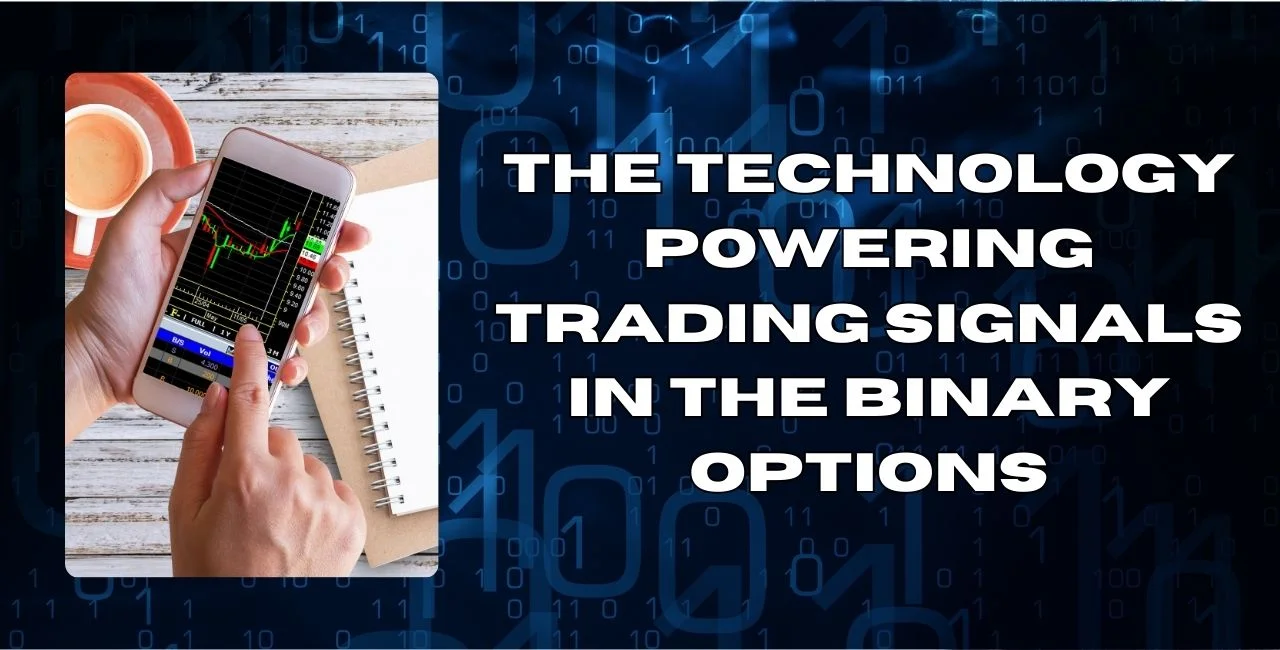The financial trading strategy known as binary options trading, in which the payment is either a fixed sum or nothing at all, has experienced a notable surge in popularity. The creation and application of advanced trading signals is crucial to this expansion. These signals, which are produced by combining many cutting-edge technologies, let traders decide whether to buy or sell binary options. The technology underlying trading signals is explained in this article.
The important Role of the Trading Signals in the Binary Options
It is important to comprehend the fundamentals of binary options trading before delving deeper into the technology. Traders of binary options make predictions about how an asset’s price will change in a predetermined period of time. The direction of the move is more important to the trader than the size of the price shift, in contrast to traditional trading. Trading signals are suggestions or ideas produced by knowledgeable traders or algorithms. Because they advise when to enter or quit a trade based on anticipated future price fluctuations, these tools are essential in the world of binary options. The performance of a trader can be greatly impacted by how accurate these signals are. Today, there are many different kinds of signals: generic triggers, unique binary OTC signals, and signals based on various technical indicators and pre-existing signals.
Also Read:- The Power of @ngrx/signalstore | Frances Tiafoe Wife Cancer | Geekzilla Autos
Technology Behind Trading Signals
Although many traders utilize these tools to streamline their trading process, not many people are aware of how they are created. However, you may use the tools more effectively if you have a solid understanding of the underlying processes. This is the process used to make these instruments:
This trading tool’s fundamental component is algorithmic analysis. In order to forecast future price movements, algorithms examine enormous volumes of market data, including past prices, economic indicators, and market circumstances. These algorithms are refined through the use of machine learning and artificial intelligence (AI), which allows the algorithms to learn from market patterns and make better forecasts over time.
Technical Indicators: Another essential component of signal development is technical analysis. To identify market trends and possible reversals, indicators like Bollinger Bands, moving averages, and the Relative Strength Index (RSI) are employed. These technical indicators can be used to help algorithms provide signals that are more accurate.
Evaluating economic variables such as GDP growth, interest rates, and employment data is known as fundamental analysis. News feeds and economic reports can be parsed by algorithms, which then integrate this data to improve the signals’ accuracy.
Sentiment Analysis: The use of sentiment analysis in trading signal technology has become possible with the rise of social media. Algorithms can assess market sentiment by examining trader comments and discussions on the internet. This can be a useful tool for predicting market direction in binary options trading.
Risk-Reduction Algorithms These are designed to take into account the funds available for trading as well as the trader’s tolerance for risk. They assist in managing the risk connected to a certain trading signal and determining the size of a position.
Real-Time Data Processing: When trading binary options, speed is essential. In order to guarantee that traders receive indications as soon as possible and take advantage of short-term market moves, the technology processes market data in real-time.
Blockchain Technology: In order to improve security and transparency in signal generation and trade execution, certain platforms are beginning to use blockchain. Blockchain technology guarantees the integrity and dependability of the data used to generate signals.
User Interface and Accessibility: Creating user interfaces for trading platforms also makes use of cutting-edge technologies. These interfaces provide traders with clearly comprehensible signals together with charts and analysis for their reference.
Backtesting Capabilities: Using past data, algorithms are tested in this manner. Backtesting facilitates algorithm refinement and ensures that the algorithms can produce profitable signals in a variety of market scenarios.
Regulatory Compliance: With the financial markets under more regulatory scrutiny, technology also helps to make sure that signal creation conforms with legal requirements and
Summing it all:
A complex fusion of algorithmic analysis, technical and fundamental analysis, sentiment analysis, risk management, and real-time data processing powers the technology that powers binary options trading signals. These tools help traders make well-informed judgments, but it’s important to keep in mind that because of the inherent dangers and volatility of the market, no technology can ensure success in trading
